4 Top Classic Genuine Leather Shoes Models
Today we will talk about genuine leather footwear. The types of footwear existing in the world are countless. For example, did you know that men's shoes with buckles are called "Monk Straps"?
Let's go to the discovery of the types of shoes for men in genuine leather. We will introduce to you their history and their peculiar characteristics. Let us have a look.
MOCCASIN

Born among the North American Indians with a very flexible sole, the moccasin is a rather informal, soft, and light shoe. Today there are many different types of moccasins. The American version, the "College," dates back to the 1920s. When lovers of the traditional lace-up shoe find encountered the moccasin, they thought it was a house shoe worn by mistake outside. In a short time, the shoe became very popular and not only among students. Fred Astaire promotes the moccasin by adopting the footwear for tap dancing. The most valuable model is welt-stitched loafer. The welt-stitched loafer is a particular hand stitching in which a thin strip of leather is applied externally between the upper part of the shoe and the sole. The unlined one, instead of the penny loafer, in black or burgundy, has remained unchanged since its debut. What are its origins? It comes from the practice of Ivy League students, in the 1960s, of hiding a penny in their tongue.
After the Second World War, Italian shoemakers were inspired by the new American shoe to create a new men's model, much more suited to the new line of Italian tailoring, especially for light summer clothes. In the last twenty years, designers and manufacturers have revisited classic moccasins' model and re-proposed it in new shapes. With heels and fringes, with imaginative variations on fabrics, many different decorations were added, from synthetic ones to python leather. Thus, the moccasin has become an emblem of casual and informal fashion and elegance, class, good taste, and refinement of men.
DERBY

The Derbies are named after a Prussian general, Gebhard Leberecht von Blücher, who wanted them for his army. Later, armies from all over Europe wore them, and around 1850 they became very fashionable as men's sports shoes. The cuffs are sewn over the vamp, which forms a single body with the tongue. The Derby can be made in both the smooth and the decorated version and, depending on the choice, can be adapted to elegant or sporty occasions. Q Derby shoes, however, typically have a sportier tone. There is also a Derby variant without strings, with a very elegant side buckle fastening. A characteristic feature of the Derby shoe is the open lacing. The different variations range from two to five buttonholes. The classic Derby is offered with a smooth front grille, a perforated and straight semi-brogue version, and a full-brogue version with cuffs. Ultimately, the Derby model is ideal for lovers of wide-fitting footwear.
MONK STRAP

According to some sources, the origin of monk straps (i.e., shoes with buckles) can be traced back to the shoes worn by horsemen in the eighteenth century. In fact, riding boots often possessed buckles through which the spurs were fixed to the shoe. This accessory would thus become part of the design of the shoes. From here, over time, it has become a characterizing element of classic men's models. The monk straps are an original middle ground between the formal lace-up shoe and the sportier moccasin. It is advisable to wear them with tight-fitting trousers. Precisely because of their harmony with dry lines, shoes with buckles have made a great comeback in recent years, especially in their double buckle variant.
OXFORD

They come from the oxonian, a short boot with side openings in vogue at the University of Oxford. They vary in ornamental processing on the tip with small holes, curved seams, sometimes even fringes. The Oxford is the classic men's shoe characterized by a closed lacing. This means that the cuffs are sewn under the vamp and close over a strip of leather under the lacing itself. This type of closure, giving the foot a more collected look, is considered very elegant. Every man should have a pair in his wardrobe for formal occasions and celebrations.
Conclusion
We hope that this information was helpful for the next time you are looking for a pair of leather shoes. If you want to know more about trendy and classic leather shoes, please visit our website. Made in Huadu offers a wide range of genuine leather products made in the world's most extensive leather manufacturing area. Contact us!
How to Wash Genuine Leather Products
If you are a bit careless like me, you probably had your clothes and thing dirty a couple of times. Above the many annoying things, getting my leather jacket clean from those stains is the worst. What to do if it happens? You can call your parents for help or Google. Well, you can just read this marvelous piece of content.
In this article, I will reveal some of the secrets to taking care of the dirty genuine leather product. Let's have a look.

Photo by Craig Adderley from Pexels
Both leather jackets and leather bags cannot be washed in the washing machine: real leather is very delicate, and continuous contact with the drum, even with delicate programs, would cause serious damage to the fabric.
Only the most recent washing machines, which have a delicate wash, are comparable with hand washing. Even in this case, the result is not always guaranteed. However, if you are brave enough, you can try washing leather jackets. Under no circumstances should you try with leather shoes, leather belts, or leather bags.
Whether you wash it by hand or in the washing machine, the leather needs to use a specific detergent. Common detergents are too alkaline. They have a pH that is too high for the skin. Even eco-leather tolerates common laundry detergents poorly.
How to wash genuine leather
Whether it is a leather bag or a jacket, make sure you:
Read the garment label and wash it in the washing machine only if the label allows it. Wash by hand or with an extremely delicate washing machine program. Common laundry detergents end up cracking the skin or deteriorating it. There are also products to clean bags and leather jackets and conditioners to soften their surface to prevent cracking, also useful for genuine leather car interiors.
Keep in mind that some soaps are suitable for dry cleaning or work as a conditioner to soften and moisturize your leather jackets!
Whether it's a leather bag or trousers, when washing, never rub the fabric! Even if there is a stain, it is important not to rub!
If it is a simple bag, wipe with a damp cloth well wrung out with a specific product. If it is a leather jacket or trousers, immerse the garment completely in the water: if the problem is the bad smells though, soda or olive oil are not good remedies, as reported by some websites…. To eliminate the smell of smoke from a leather jacket or the bad smell of sweat, when simple water is not enough, you can add a couple of white wine vinegar glasses.
Vinegar is great for cleaning the skin and eliminating bad odors. It is also extremely volatile, so if you let the garment dry in a well-ventilated place, even the vinegar smell will disappear within a few hours.
Remember that jackets, trousers, and other leather garments must be washed in reverse (outside-out). After washing, place the leather jacket (or trousers) on a dry towel and roll the towel upon itself to wring the garment without exerting direct friction. The skin tends to wear out easily.
Once the superfluous water has been removed, lay the garment on a hanger, ensuring that the lower edges do not deform. Generally, the weight of the water deforms the garment, so once the water in excess is removed, it will be easier to dry!
Let the skin dry in a temperate, ventilated, and bright place. Avoid direct sun. Also, do not dry the leather on radiators or direct sources of heat to deform the leather or damage it.

Conclusion
Here you go, some precious advice about cleaning a genuine leather product. Did you know that one of the largest areas of leather manufacturing is in Asia? Huadu in the Canton province has the world's biggest district of genuine leather production. Besides the mild climate and beautiful, welcoming Chinese town, it is a great business opportunity. Huadu is the rendezvous point for supplier and leather product manufacturers. To have further information, check here.
Something You Should Know About Genuine Leather
Has this situation ever happened to you? When you want to buy a genuine leather product, you will most likely be confused by the seller's words game. You can often hear them talking about the first layer and second layer of cowhide. However, the majority of us do not understand the difference between the two. So what is the difference between the first layer and second layer of cowhide? Let's take a closer look together. By the end of this brief article, you will be able to tell the difference.
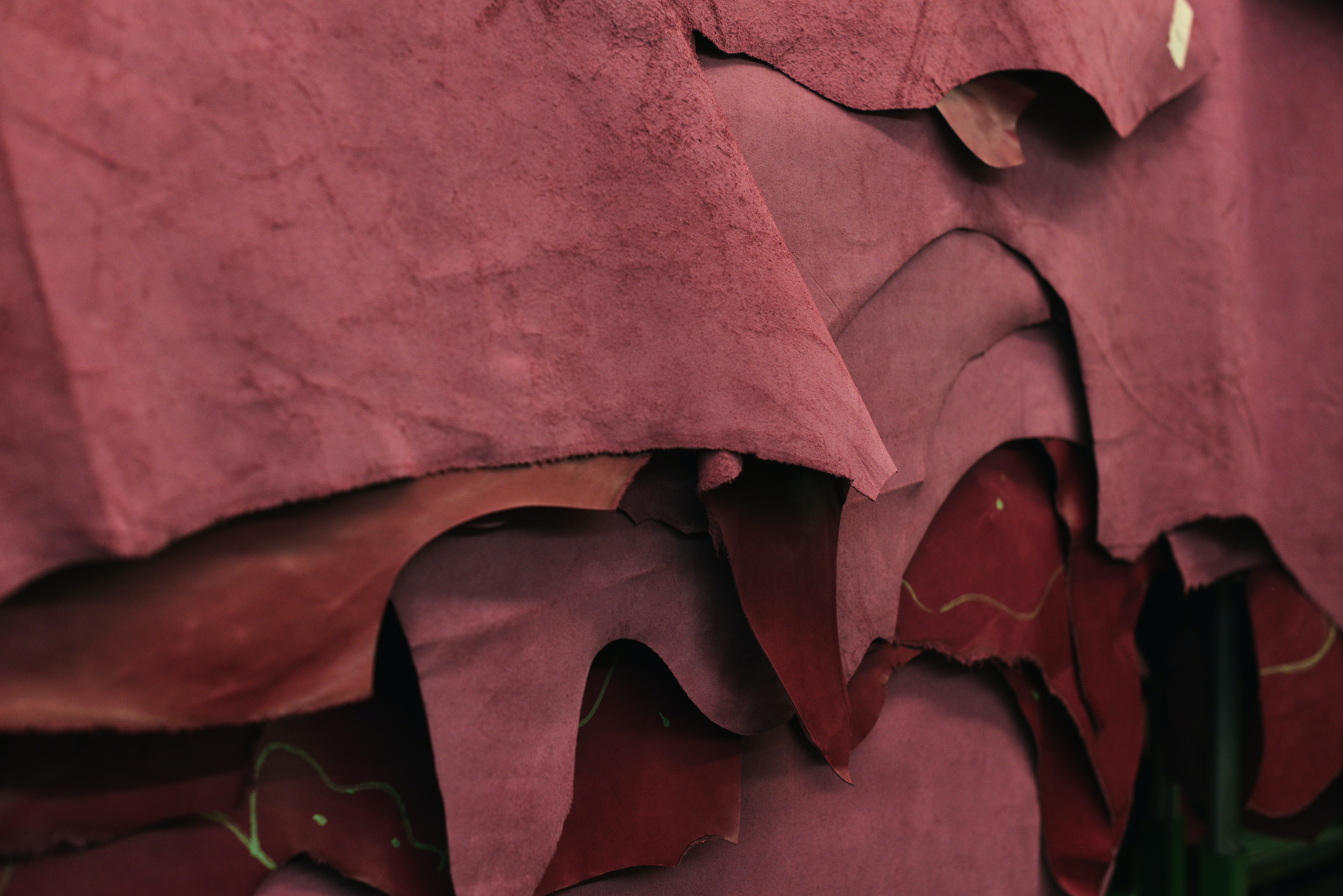
Differences between the two levels of Real Leather
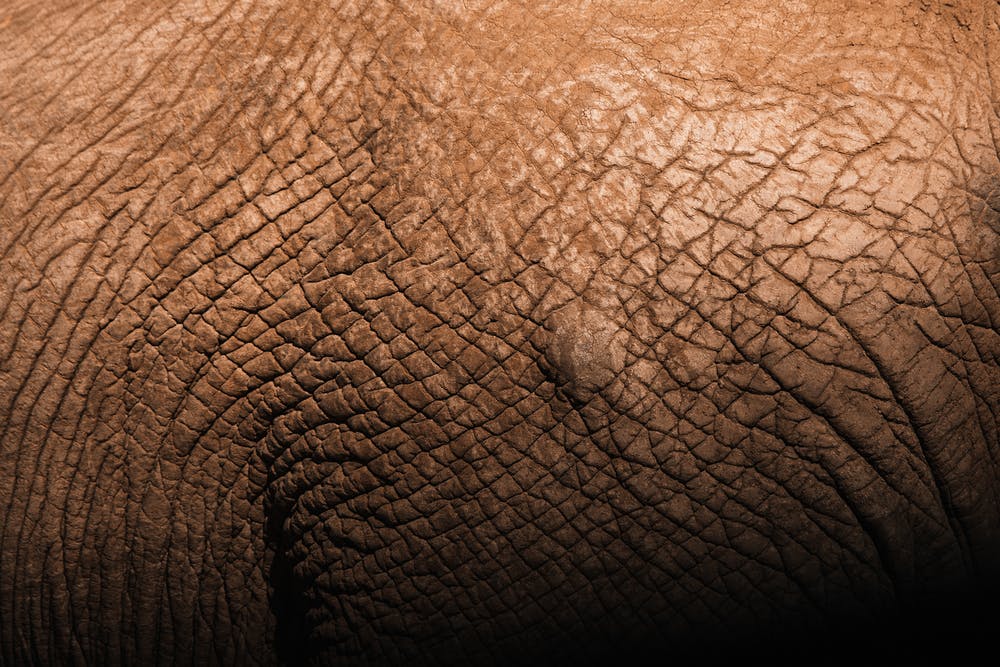
Fiber Density
Everyone knows that the first layer of cowhide comes from the animal's skin's surface, which has delicate texture characteristics. After being treated, the refined material is used for top quality leather products: such as luxury brands leather bags, shoes, and other accessories. On the other hand, the second layer of cowhide mainly came from multiple levels of hiding crosscut and pieced together. This is the reason behind the leather looks rough and hard.
Thickness
If you bought items of the two categories, try to touch them, and you will notice this point. The thickness of the first layer of cowhide is generally about 1.3 mm, while the second layer of cowhide is about 1.68 mm. By feeling the leather product's surface with our hand, we can easily notice that the first layer of cowhide looks more delicate.
Production Processes
Although the first layer and the second layer cowhide are both natural leather materials, the production process between the two is quite different. The first-layer leather is exquisite, and the processing is carried out without using chemicals. Instead, the second-layer cowhide is made by adding some PVC and PU film, so the second-layer cowhide leather is relatively hard and not soft enough.
Different Feeling
Since the cowhide is selected from different cow parts, the produced leather's texture is definitely different. While the first layer of cowhide feels smooth to touch and is very soft and comfortable, the second layer of cowhide has a slightly rough feel.
Pricing
Generally, the price of leather goods made from the first layer of cowhide is relatively high, and the overall product lifespan lasts longer. On the contrary, the second layer of cowhide is different: its leather content is lower, therefore the price is lower. Of course, it will burst or break much easier if used for a long time.
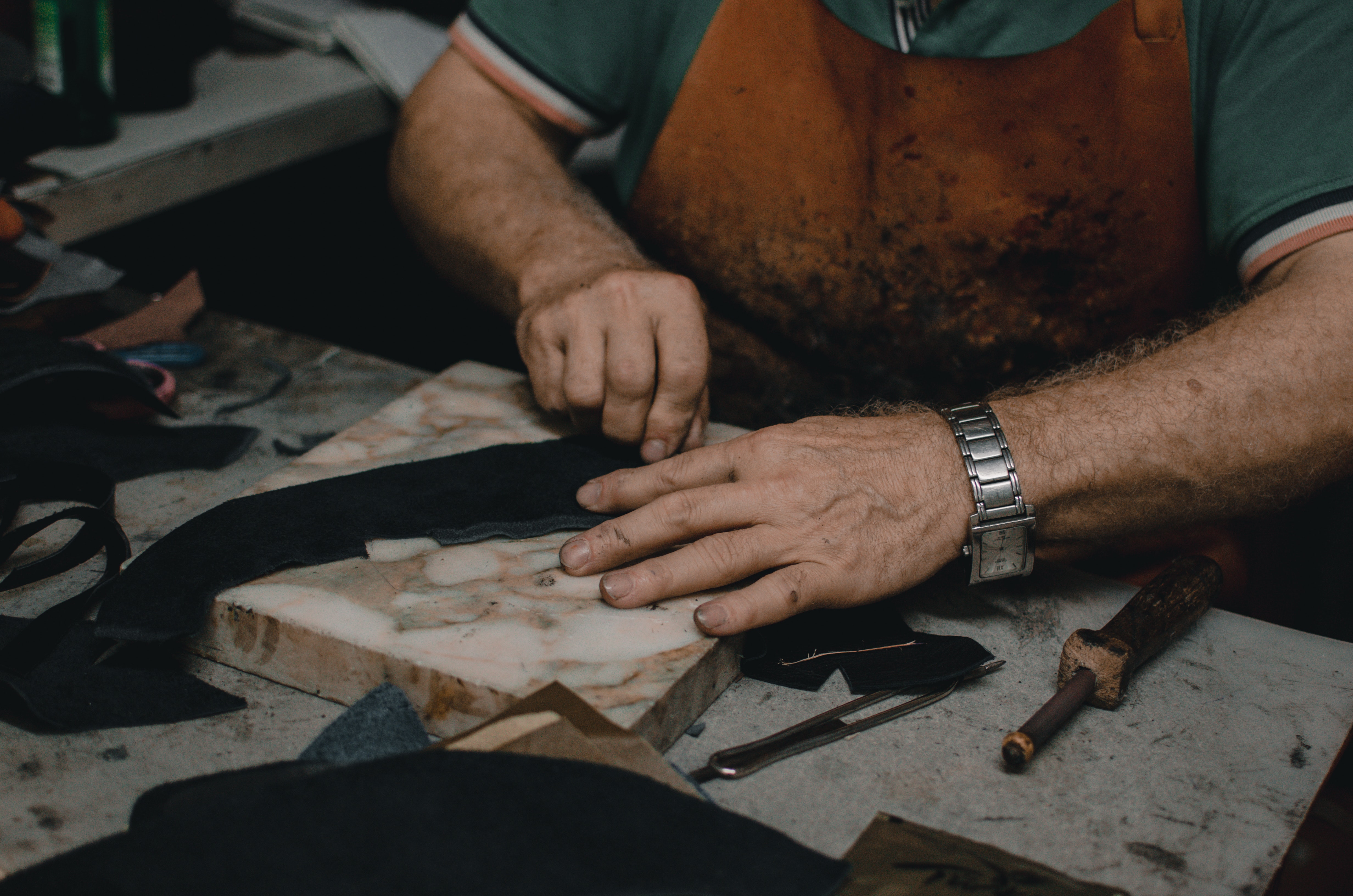
Which one is the better choice?
Since there are such noticeable differences between them, which one is the better pick? Needless to say, the quality of the first layer cowhide is higher because most of the first layer cowhide is directly processed, and the leather fiber tissue produced by it has a greater density. Besides, this quality of the leather product is delicate and textured, with the most natural characteristics. Still, the second-layer cowhide is a split layer of cowhide. Almost all second-layer cowhides are made by adding some materials such as polyethylene in the production. Therefore, the texture of the second-layer cowhide is much worse than that of the first layer cowhide. The air permeability of the second-layer cowhide is not impressive, and it is prone to cracking. Naturally, the quality is much worse than that of the first layer cowhide.
Conclusion
Hopefully, this article gave you more insides about the different levels of genuine leather. Huadu Leather, in Guangzhou, China, is the widest leather manufacturing cluster in the world. Here, an everyday huge volume of refined first layer leather is processed to make a high-quality leather product. If you want to know more about natural leather, come to visit our website!
Best 6 Ideas for Trendy Leather Bags
With life improvements, people's product consumption variety is becoming more abundant. At the same time, it is necessary to pursue a higher quality of life. For women, what can beat an elegant leather bag? To make ourselves stand out, we need to invest in our appearance, clothes, and accessories. What is trendy today, you may ask? The answer is leather accessories.
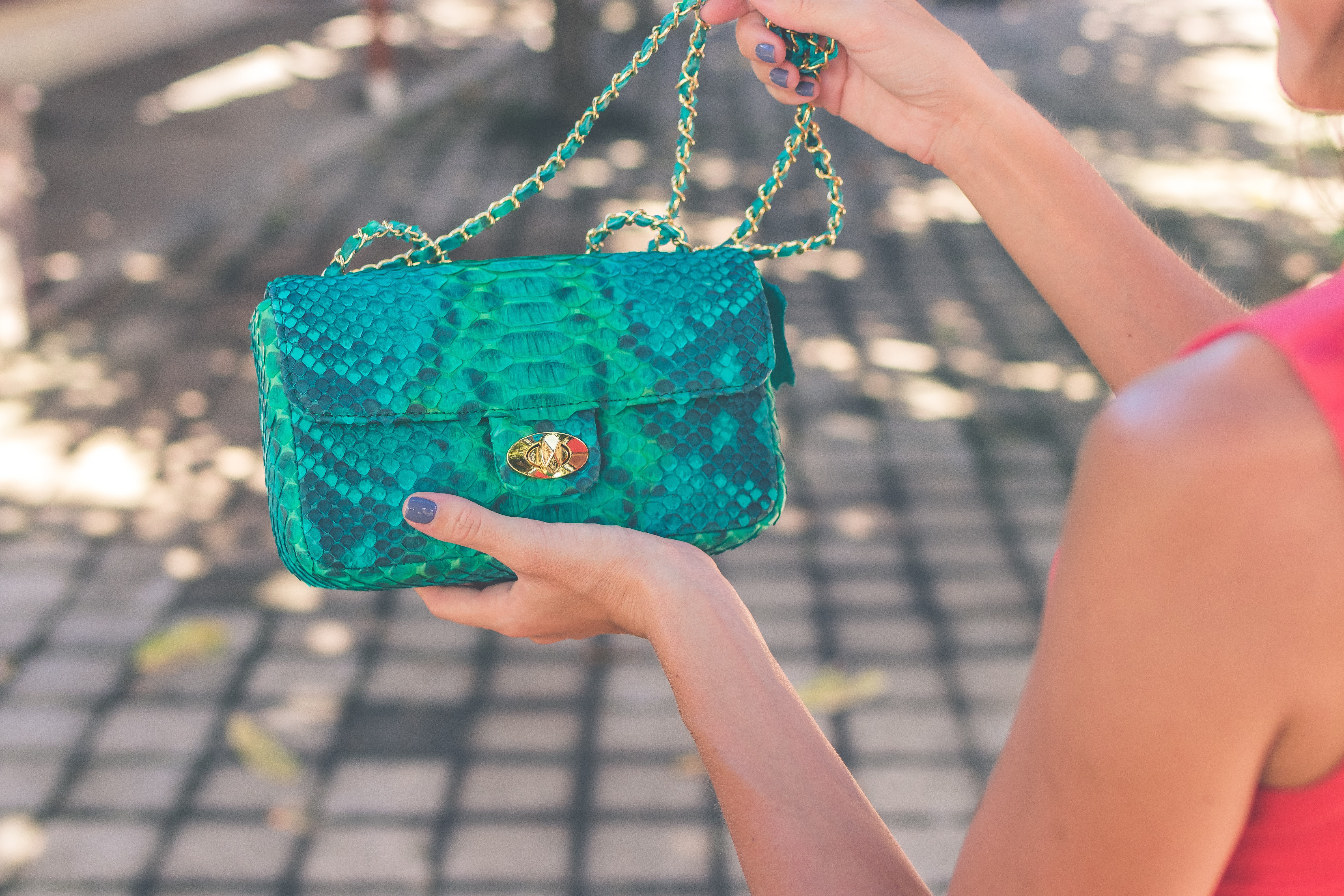
Trendy ideas for leather bags
Elegance and dignity may gain your satisfaction in your life. For this reason, choosing the right accessories is incredibly crucial. Items made of genuine leather, such as leather belts and bags, always play a decisive role.
Sometimes though, it is not easy to pick the right product that matches the customer's taste and style. Someone may ask, what is the genuine leather bag that we often talk about? What types are there? Don't worry. I will introduce you to 6 leather bag categories so that you can have a better idea of what to buy next.
As the name implies, a leather bag is a bag made from animal fur that has been dried and degreasing. Generally, there are several common types of leather on the market: cowhide, sheepskin, deerskin, crocodile skin, horse skin, and snakeskin, each of which has different characteristics and prices.
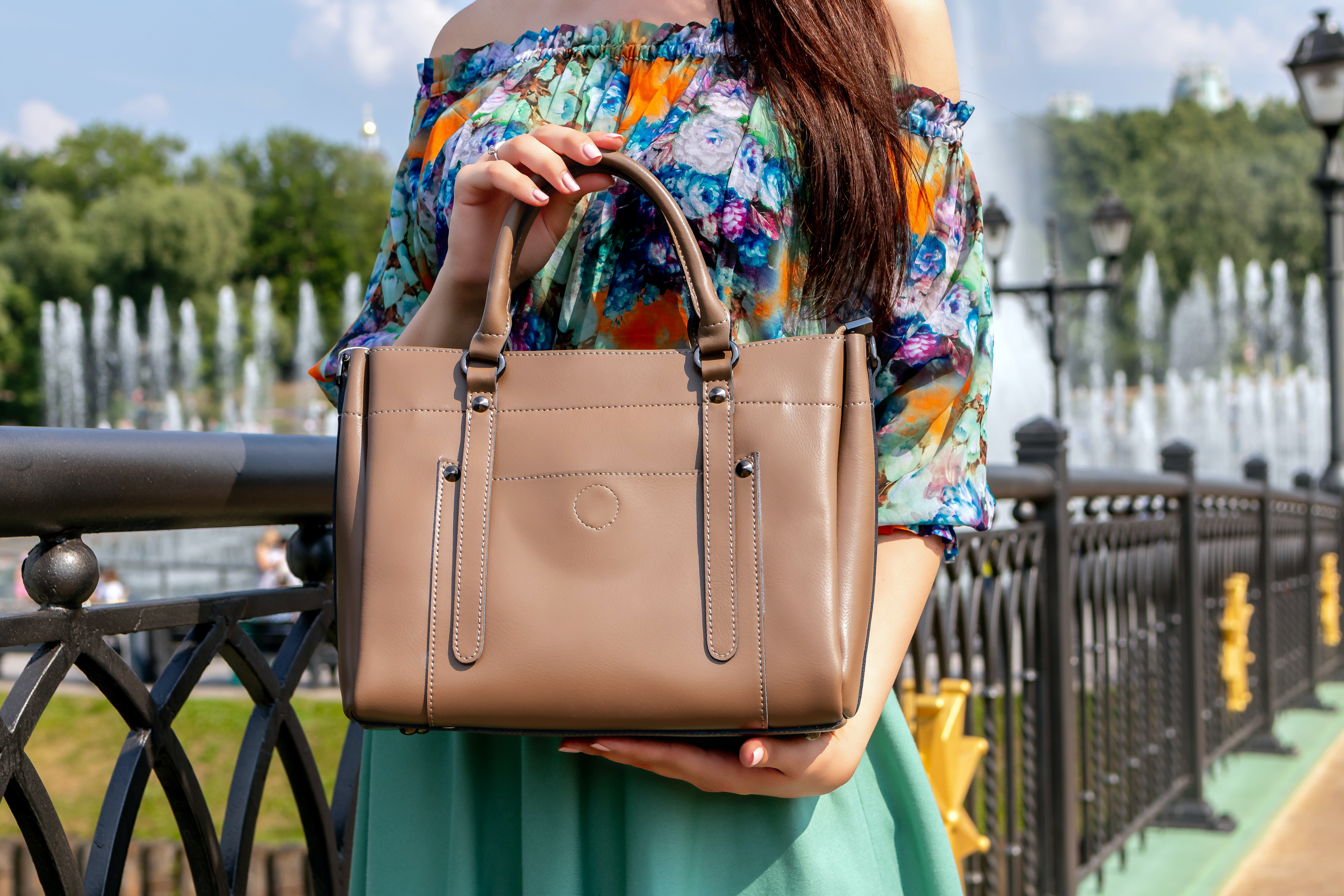
- Cowhide bag
Typically, we see most cowhide bags on the market, and they come in many styles and colors. Cow leather has small pores, generally round, uniform, and tightly distributed; its surface is bright and smooth; its thickness is plump and delicate; its appearance is soft and moist. It has good air and high moisture permeability, fine and well-distributed pores. The mastoid is gentle and the grain side is smooth. This is usually the top pick.
- Sheepskin bag
The salient feature of sheepskin is that the pores on the grain side are deep within the leather. The pores are clear, and several pieces are arranged in a group like scales or jagged. The pattern features are like "water ripples". Sheepskin is light, thin, soft, with a natural luster, and elastic. But its strength is not as resistance as cowhide and pigskin. Sheepskin can be made into bags of various styles and shapes. Although its color is not as rich as cowhide, the texture is definitely better. If you want to pursue the bag's quality, you can give priority to the sheepskin bag.
- Deerskin bag
Deerskin bags are usually soft, beautiful, lightweight, water-resistant, and also high-temperature resistance (up to 120 degrees). Compared with the two skin types above, deerskin will be of higher grade, but it is easily scratched and not suitable for hard rubbing and twisting. The surface of the velvet has superfine synthetic fiber that is easy to be heated and melted. Thus, it always needs careful maintenance, which may not be suitable for ladies who do not want any troubles.
- Crocodile leather bag
The beauty of the crocodile leather bag lies in its natural checkered pattern. Although it lacks elasticity, it is very burlier. As long as the crocodile leather products are properly maintained, they will become brighter and more flexible. It is quite challenging to obtain, dye, and produce crocodile leather. Therefore, crocodile leather bags are considered as "platinum leather" and are extremely expensive and regarded as a luxury item. Crocodile leather also has its own natural and exclusive texture, with an irregular, uneven feel. Generally, it is not the right match for too complicated styles. Moreover, this type of bag is more appropriate for relatively older people.
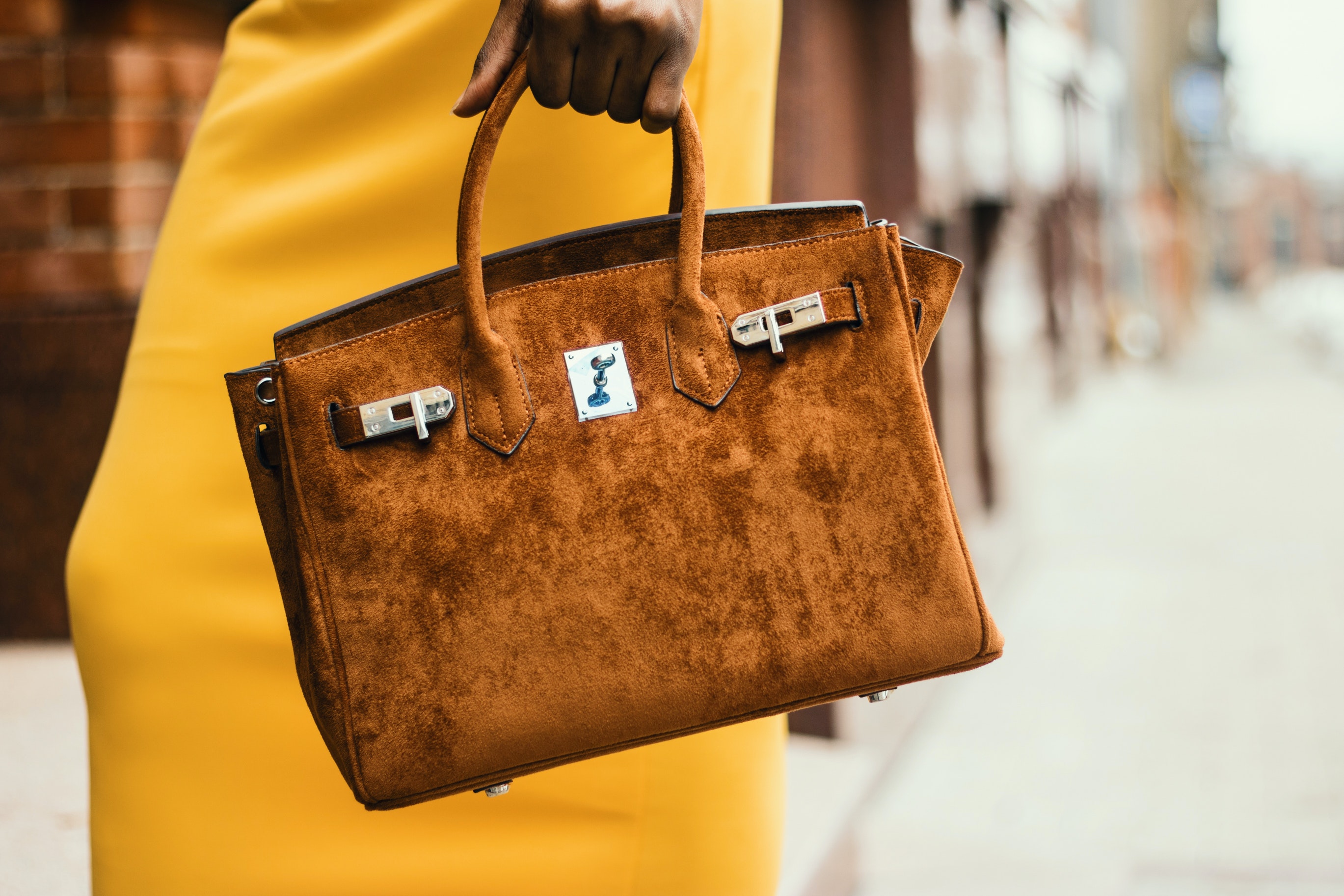
- Horse leather bag
The front of horse skin is thin, and the fibers are loosely woven. The leather made of it is small and soft, with a flat grain. The back of the horse's skin is thick, and the fibers are tightly woven. The leather bag fibers are wear-resistant and waterproof, which can be used for special waterproof shoes' upper and bottom leather. As the nipple layer has fine collagen fibers, the tightness of weaving is not as good as that of cowhide leather. There are not many horse leather bags, and most of them are used as leather shoes. Although they are compact, they are too thick. So for you ladies out there, it is not recommended to buy this kind of leather bag.
- Snakeskin bag
The backside is silver-gray, shiny, with diamond-shaped or oval scales. There is a row of horizontally long oval scales on the ventral surface. The inner surface is smooth and shiny. Light and soft, easily broken. The most significant feature is its unique texture, giving people a strong visual impact and a wild exotic taste, which is very suitable for people who pursue particular dressing personalities.
We hope that this information was helpful for the next time you are buying a leather bag. If you want to know more about leather bags, please visit our website. Made in Huadu offers a wide range of genuine leather products made in the most extensive leather manufacturing area in the world. Contact us!
Best 5 Tips for Judging the Genuine Leather Quality
When we are talking about genuine leather, we are talking about precious material. However, the leather we find in most shops is not always of top quality. As for genuine leather, there are many varieties and types. It has happened to everyone, several times, to find themselves buying an accessory or a leather garment. Besides the "brand factor," which undoubtedly has a great influence on our shopping habits, the quality is the other main element to consider together with the price before our purchase.
The quality of leather lies in the treatments or processes, and of course, the raw materials. Therefore, it is important to be able to recognize if the material is high level by yourself to not fall into scams. Here are five basic tricks suggested by industry experts to know if the genuine leather is as good as you believe. Let’s us take a look.
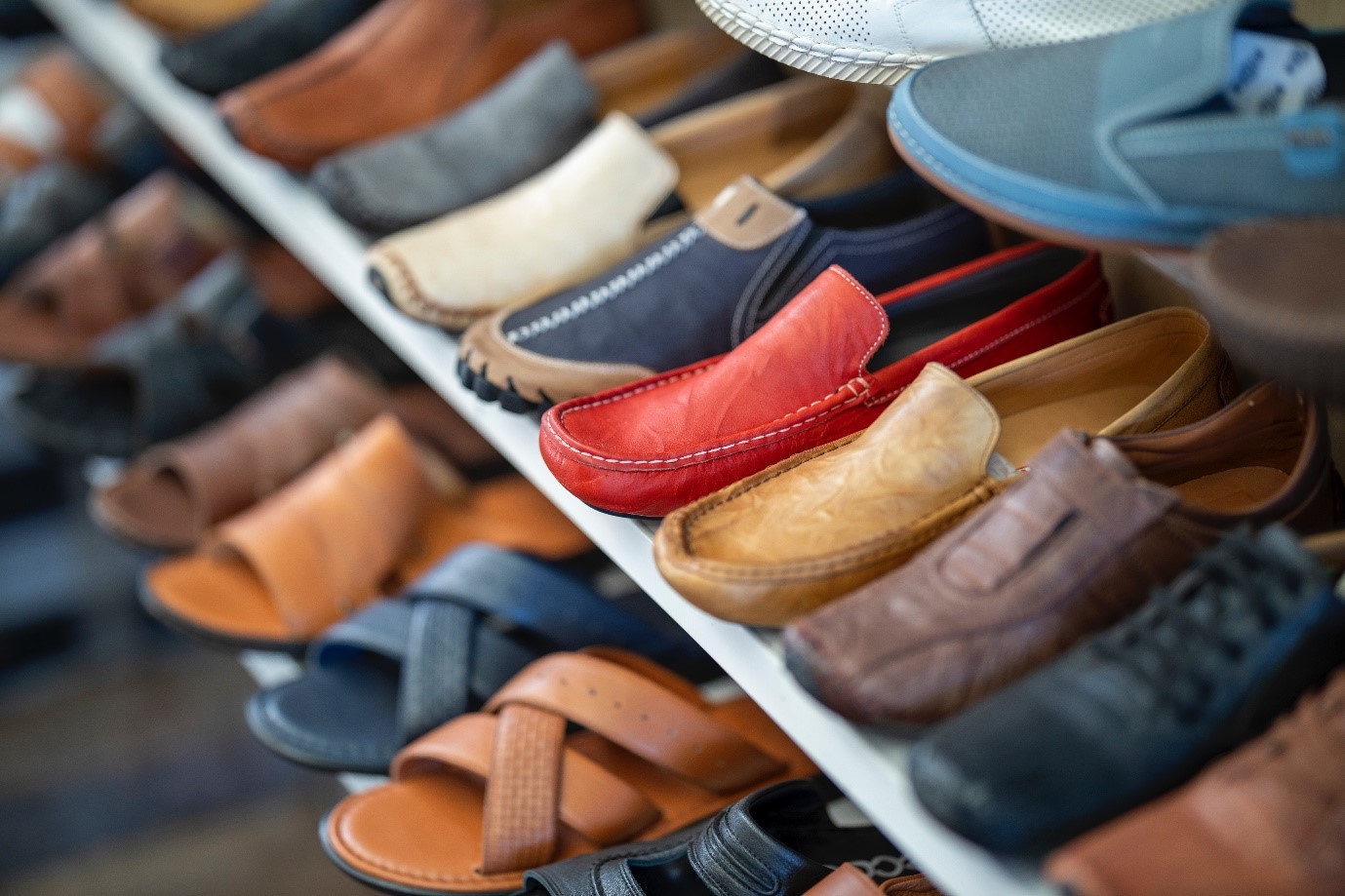
Look carefully at the leather surface
This step may seem obvious, but it is essential to carefully examine each piece of leather you are about to purchase. Pay close attention to leather that has been painted, or the one that smells like vinyl glue. Also, if possible, pull it lightly and fold it in your hands to understand its resistance. High-quality leather is heavier than the others due to its high fiber density. Remember that the top-quality leather is the first layer of the animal skin.
Check all leather seams
After checking the material, we move on to the seams. The hand stitching is stronger and more aesthetically appealing than the machine stitch. Following this technique, the craftsman uses two blunt needles connected to a single thread. While sewing, pass two needles through the same hole to create a tight and strong knot. Machine sewing, on the other hand, undoubtedly happens faster but is less resistant.
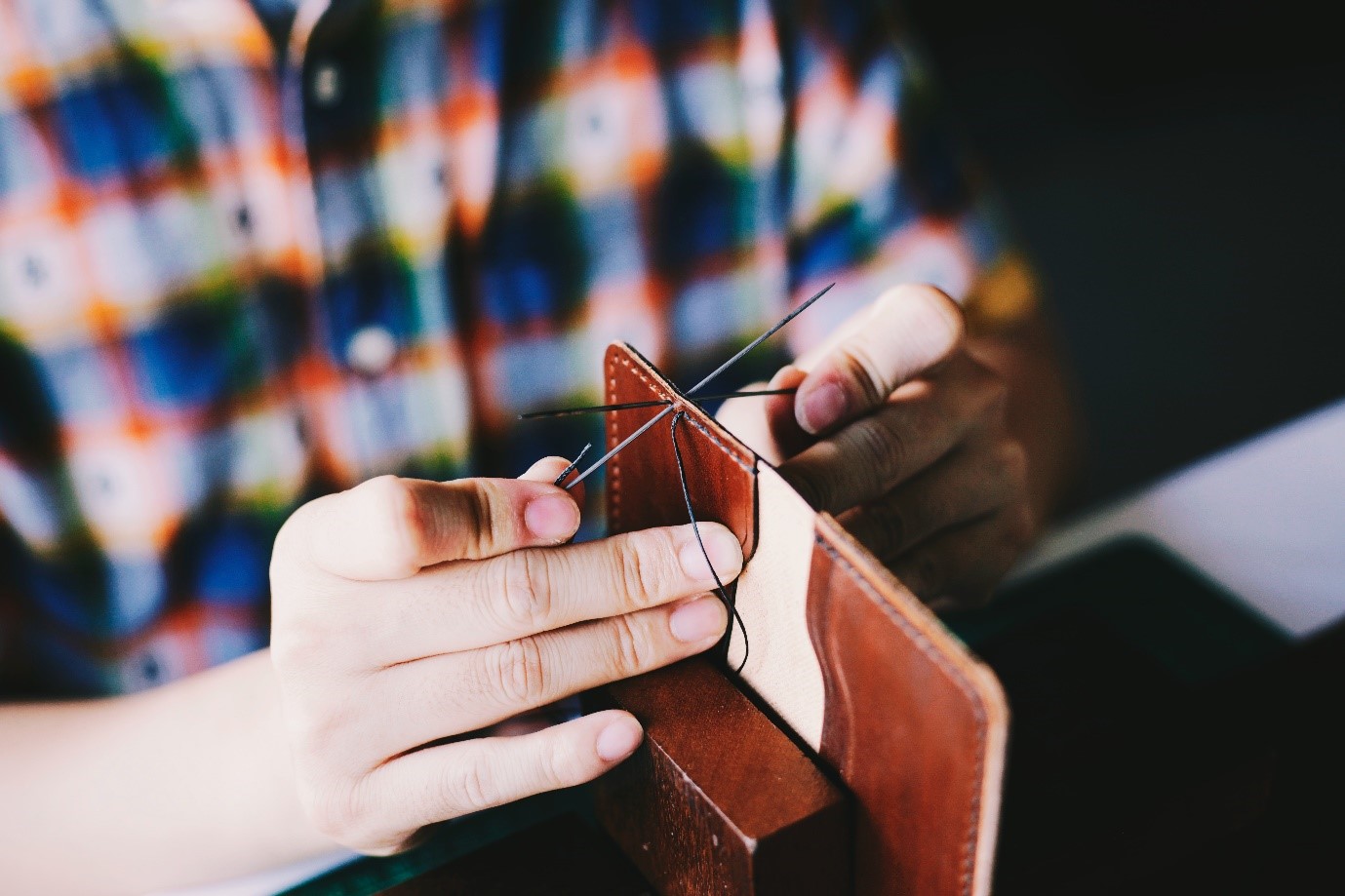
Check the edges of the real leather
The edges of the leather must be polished and burnished. This step creates a shield that protects the material from all external elements, which could damage it. Also, if the edges are not browned properly, moisture could penetrate and cause them to rot. If the edges, made with several layers of leather, look like one, it means that the leather's quality is very high. In fact, this step is very difficult to carry out, and only experienced artisans are able to do it.
Pay attention to the cut of the leather
The genuine leather must be cut following the "grain direction". For example, a leather wallet must be cut so that there is the least amount of stiffness in the places of greater stress. Otherwise, over time, the accessory will present unnecessary creases. A skilled craftsman also knows how to cut the leather in order to avoid blemishes or scars. Furthermore, the hide comes from an animal's coat, which may have been marked by flea bites, or cuts, or even fat deposits. An expert must be able to cut the real leather in order to avoid making garments with these parts.
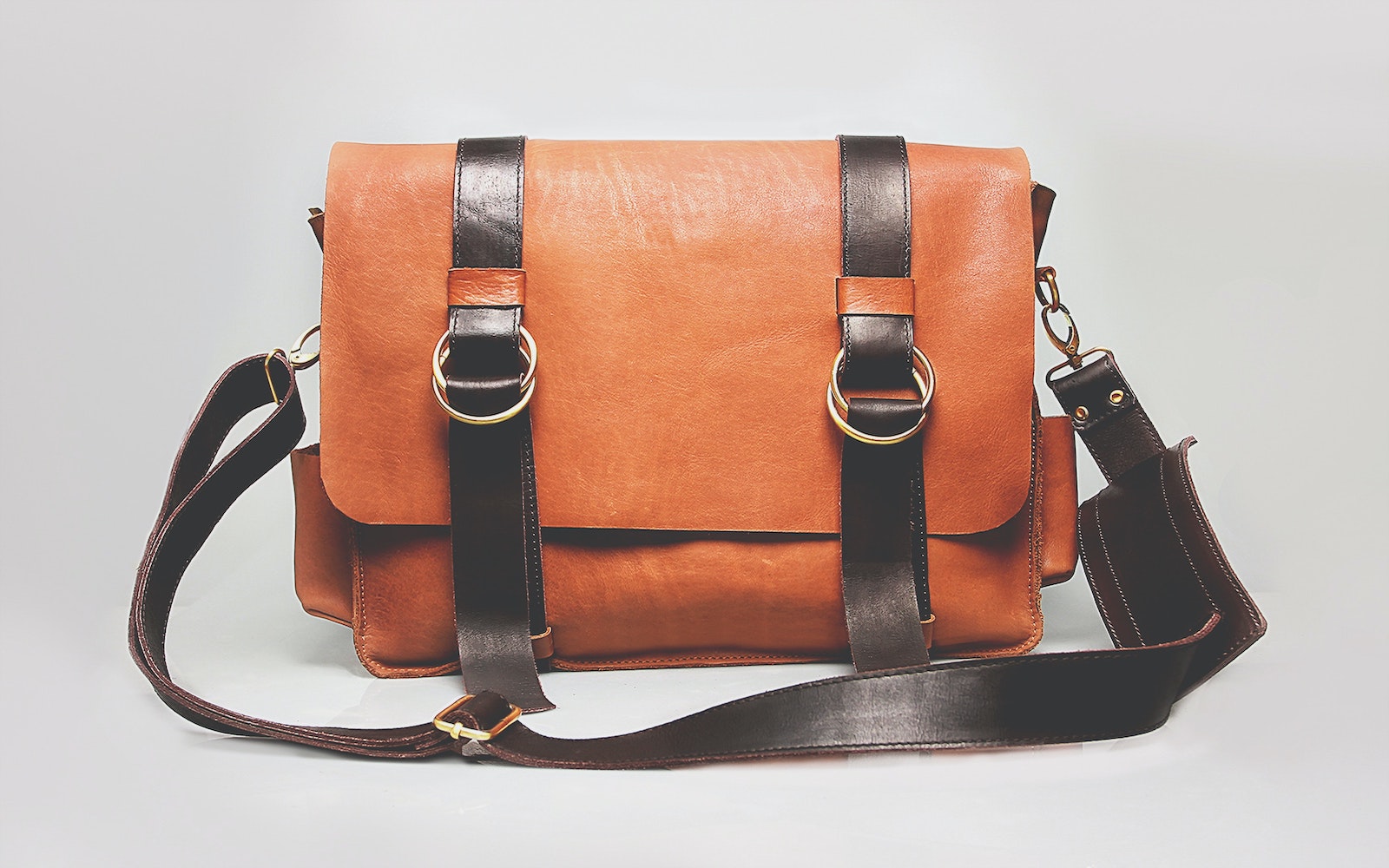
Pay attention to the thread of the genuine leather
Finally, it is important to use high-quality thread when sewing two cuts of leather together. Linen threads are the most used: they are more resistant than nylon threads and have a lot of flexibility. Therefore, before buying your next leather bag or accessory, our advice is to examine the quality of the product.
Hopefully, this brief article could provide you with some tips to tell the difference between poor and good quality genuine leather. To know more information about leather products and business opportunities, come to visit our website.
A less expensive alternative to real leather, PVC leather, or faux leather, is obtained from bits derived from leather processing. This environment-friendly material is widely used in furniture, clothing, accessories, and car upholstery business. In this article, we will explain to you how to clean PVC leather fabric and offer you some useful suggestions. Let us take a look.
These PVC faux leathers are increasingly gaining attention and recognition across the world. Most suitable for car upholstery and sofas, this waterproof, mildew-proof, wear-resistant, and fire-resistant leather is optimal at standing at relatively low temperatures. Although this PVC leather provides the same properties as real leather, many people claim not to know how to handle the cleaning. Here is the correct procedure for cleaning the PVC leather fabric.

Dry the Stains
If your PVC leather fabric product comes into contact with liquids and food, remove the remaining with paper towels as quickly as possible. In this way, the stain will not have time to stick on the surface. The damage will be minimized, thus saving a lot of cleaning time and energy.
Soapy Water Preparation
Fill a container of warm soapy water. Add dish detergent and then mix it until bubbles are formed. Here we share a little secret with you. Never use too aggressive detergents as these products may damage the material.

Clean the Stains
Soak a soft and clean cloth in the soapy water. Never allow the water to drain from the cloth, in order to avoid excess saturation between the PVC leather and water. Softly clean the stains with a damp cloth. Then wipe the spot with a clean, dry, and soft cloth.
The secret behind this cleaning technique is to ensure sufficient humidity to permeate the leather. In this way, it is easier to remove marks and stain from the surface. When working on a large area, clean one portion of the stains at a time. Use a damp cloth on a small area before drying it. Then move on to the next part, following the same procedure until all the stain has been removed. It is not wise of you to leave the PVC leather fabric moist for too long. It would help if you never allowed the skin to be soaked in water for an extended period of time.
Baby Wipes for Instant Cleaning
It is advisable for your car upholstery always to prepare a pack of baby wipes in your car. Experts recommend baby wipe because it provides a solution for immediate cleaning while on travel. Baby wipes contain enough moisture to clean stains while maintaining a short drying time. Furthermore, intended for cleaning baby's delicate skin, this product is safe to use both on faux leather and real leather.

Faux Leather Polishing
This is actually an optional step, but it is necessary to maintain the PVC faux leather better. It will be sufficient to get cleansing milk and pouring it on a soft cloth. Then rub delicately on the specific area and let it dry naturally. The last step is to rub the surface with a dry cloth.
Here you have it, some of the tricks to better clean a preserve your PVC leather fabrics. To know more information about genuine leather and faux leather products, come to visit https://www.made-in-huadu.com/.
Bags, belts, shoes, wallets, and other accessories: genuine leather items are increasingly in demand thanks to this material's quality and versatility. However, there are a lot of shops selling synthetic leather as real high-quality products. In this scenario, how do we avoid being scammed? How to recognize a genuine leather item and distinguish it from others made of synthetic materials?
This article draws up a practical and quick guide to understand how to recognize real leather.
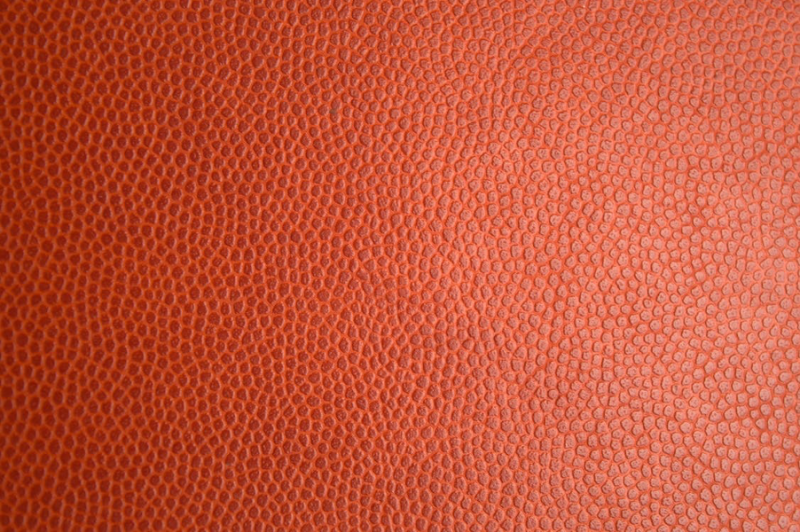
Check the Labels
As with any other product, the first thing to do to make sure of the materials, it is to read the labels. Genuine leather products usually have the following words: real leather, genuine leather. If there are no visible labels on the garment, this should give you the first hint. Most likely, sellers not advertising for real leather are offering you synthetic materials.
If you want to buy used items whose label is no longer legible, it is good to know that real leather is subject to wear and tear over time and deteriorates, showing the substrate of the leather's grain. On the contrary, synthetic materials and imitation leather will ruin and tear to the point of being unusable.
Examine the Inside Layer
Another way to distinguish genuine from fake leather is to examine the inside layer. Leather accessories have two sides, the external and internal sides, and the latter can help us understand if an item is made of genuine leather.
Most items made of synthetic materials are limited to reproducing the external side but not the internal one (for which mesh fabrics are used). If on the inside there were filaments, then I have bad news for you, it is an imitation. Genuine leather leaves no protruding threads or strands.
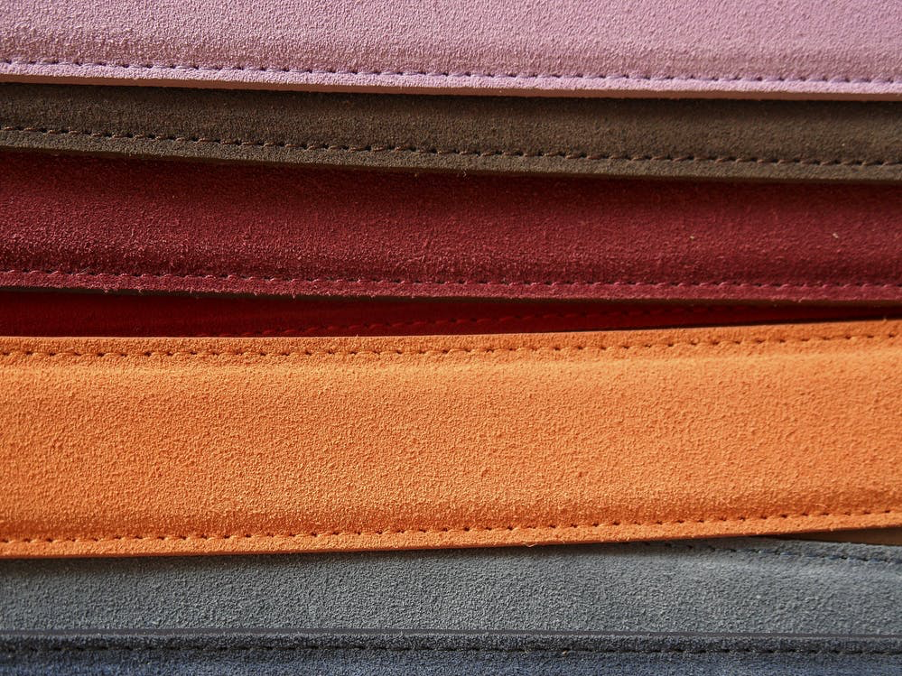
Look at the Imperfections
Animal skin like ours has imperfections. The genuine leather items are all different from each other precisely because they are made with real animal skin. Identifying marks, wrinkles, or stains is a sign of good product quality. On the contrary, the faux leather products made with the help of machinery have symmetrical and similar veins. The same goes for the color: it is difficult for an article made of genuine leather to have a 100% homogeneous color, but instead, it will have small differences.
Your Nose Can Tell the Truth
It may seem strange or embarrassing but smelling the product can help us understand if an item is made of genuine leather. Leather has a distinct smell, while items made of synthetic materials often smell like plastic.
The Fire Test
We do not recommend doing this experiment at home or in the shop. However, using a lighter fire close to a leather object for a few seconds can reveal if the leather is real. If it is true leather, the item will be blackened and will give off a smell of burnt hair. An object made of synthetic materials, on the other hand, will most likely catch fire, exhaling the smell of burnt plastic.
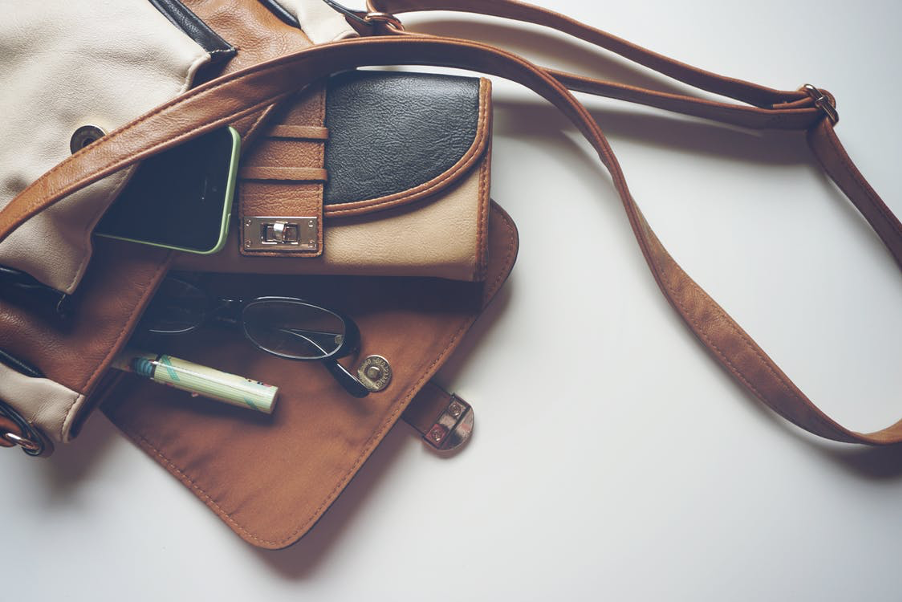
Compare the Price
Last but not least is the value for money. An article made of genuine leather can never have the price of an article made of faux leather. For obvious reasons, genuine leather items are more expensive: first of all, the processing necessary to make the leather a finished product requires hours and hours of work and skilled labor. Unlike the faux leather items printed in series by industrial machinery, the real leather items are handcrafted by skilled workers.
Next time you will buy leather items, use these tips to tell the difference between faux and genuine leather. To know more information about leather products and business opportunities, come to visit https://www.made-in-huadu.com/.
In recent years leather products purchase has increased exponentially. The growing demand for fashionable handbags, top quality leather wallets, and other accessories has influenced the overall industry expansion. The leather items market forecasts a record CAGR (Compound Annual Growth Rate) of 6.2% in 2020-2025.
Leather items popularity comes from their qualities, such as dustproof, fireproof, crack-proof, and durability, which make them, in most cases, the first choice as material. Under this premise, China is one of the major players in this sector. Especially, the Huadu District near Guangzhou (Guangdong province in the south of China) is a thriving ground for high-quality leather mass production.
In this article, we will introduce you to a new opportunity for your business in Huadu District
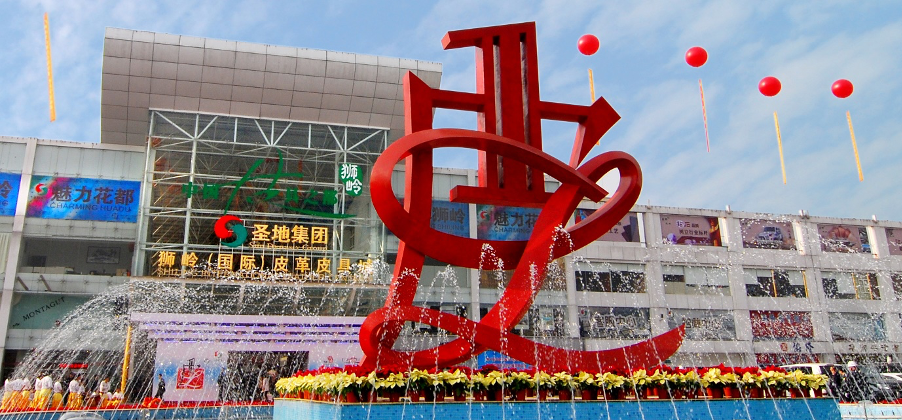
About the Shiling
Located not far from the Huadu District, the industrial area of Shiling is considered to be the ""Chinese Capital of Leather Products." Covering an area of 136.31 square kilometers, with 300 thousand inhabitants, Shiling is an ideal location for business. The town is one of Guangzhou's main satellites, which includes the developing economic zone and the sub-center of Huadu.
Shiling has a unique advantage because of its geographical position. Situated in the northwest of Huadu District, next to Qingyuan City, Shiling is just 15 kilometers away from Guangzhou Baiyun Airport and Huadu Port. There are two highways, the Guangzhou-Qingyuan highway, the Zhaoqing-Huadu highway, three railways, the Beijing-Guangzhou railway, Wuhan-Guangzhou railway, and Guangzhou-Qingyuan railway connected with the city hub. The strategic position makes logistics convenient, and the town is efficiently integrated into the region's vast transportation network.
Other than an ideal business place, the town offers a welcoming environment for living. Seamlessly in harmony with the surrounding nature, people here are enjoying a happy life. Besides, the city is renowned for its historical sightseeing: the Provincial Level Lotus Screen Resort, Temple of Emperor Pangu, and Huayan Temple. In the past, Shiling has been awarded by the government with the honorary title of the Chinese Capital of Leather Products and it is regarded as the "China Leather Products Export Base."
The "Made in Huadu" Project
As the main industry in Huadu District, Huadu Shiling Leather Association has become an industrial agglomeration that combines manufacturing, product design, and R & D with supply chain management.
With more than 40 years of development history, Huadu Shiling Leather Association is supported directly by the local government. The product category includes all types of leather items ranging from trendy bags, backpacks, wallets & purses, suitcases, and various accessories.
To this date, the annual output of leather production has reached 7 million pieces. Nearly 20000 sales networks were established by major enterprises, exporting goods to more than 136 countries and regions worldwide.
In Shiling, we can find the world's largest raw materials distributing markets, leather goods exhibition centers and industrial parks, over 8000 local and international manufacturers, over 24000 individual businesses, and about 300 000 employed workers.
If these numbers were not enough, the secret behind Shiling is the Leather Industrial Research Center. To ensure the highest standards, many organizations have established their headquarters in Shiling. We can find the TBT Research Base, Leather Electronic Trade Center, six industrial chambers, and associations in the industrial area.
Overall, there are more than 2600 self-owned brands and over 4400 registered trademarks. Some of the well-known brands are: BESMART, CEFIRO, TT, CHAOKUPAI、AOKING, VGOAL, GUSSIO, ONEPOLAR, and many international brands, such as MONTAGUT, DUNHILL, GOLDLION.
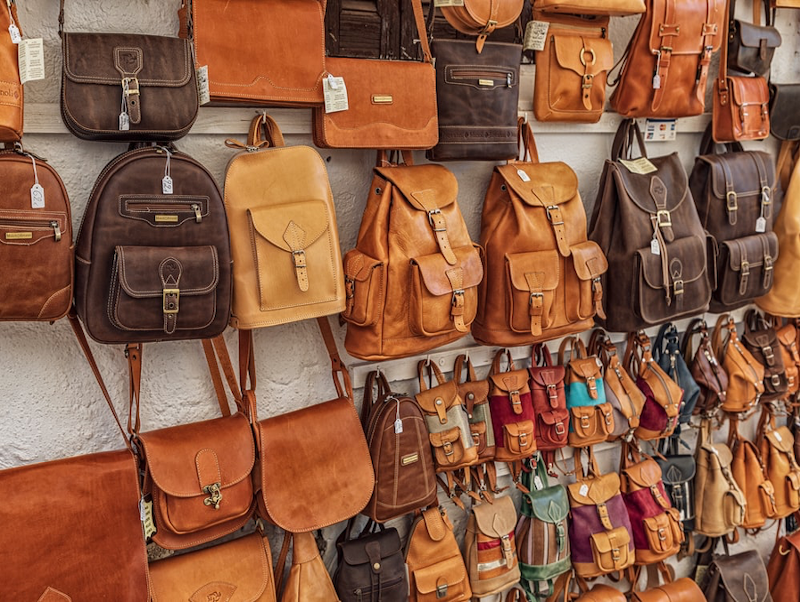
Conclusion
For the international distributors, agents, and consumers, the Huadu Shiling Leather Association offers a unique opportunity. Here, you can find a one-stop solution for high-quality craftmanship of affordable leather goods. To have further information about leather products, you are welcome to visit our website.